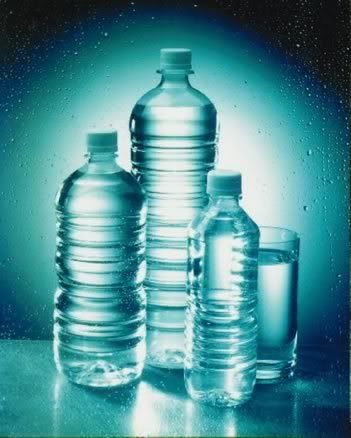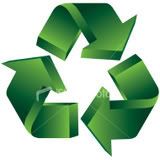America's addiction to oil is not limited to fuel, contrary to popular thought. True, 81% of our oil use is for fuel, but where does the other 19% go?
Before crude oil can be used it must be refined into one of three products: (1) a fuel product such as gasoline, diesel fuel, jet fuel, kerosene, or liquefied refinery gases, (2) a non-fuel product such as asphalt, lubricant, solvents, wax, or (3) petrochemical feedstock such as benzene, toluene, xylene, ethane, ethylene, propane, propylene, naphtha, or gas oil. Fuels are used to for space heating, transportation, electricity generation, crop drying, cooking stoves, water heaters, and lamp oil. Non-fuel oil-derived products include asphalt, lubricants, petroleum coke, road oil, solvents, and wax. Petrochemical feedstocks are used in the production of fertilizers, plastics, paints, pesticides, herbicides, medical equipment, and synthetic fibers. (Credit: Petrochemicals: Is Oil Too Precious To Burn?)
That the ubiquity of oil in American life goes unnoticed is astonishing. About 3% of the oil we use ends up as roads (asphalt is petroleum-based). We drive our cars on those same roads to get to the stores where the products are wrapped in plastic and sit on plastic shelves and get rung up through a plastic price scanner. Plastics are petroleum-derived products as well. Even "wood" furniture is rife with pressed foam mouldings, again a petroleum derived product. The vegetables we eat are fertilized with and protected from bugs by petroleum products. Artificial fertilizers and pesticides come from oil. Synthetic materials in our clothing are often petroleum derived as well. In a sense, we eat it, we wear it, we sit on it, we drive with it, we store our sandwiches and cola in it. Oil is absolutely everywhere. (Credit: Oil And Ethics: American Consumption and Entitlement Egoism)
When I was a kid, water came from a faucet and pop came in glass bottles. Only supermodels drank bottled water, and pop tasted so much better. I remember the quart bottle of Pepsi in our fridge and getting to keep the change after I hauled cartons of empty bottles into the store for my aunt.
Long before recycling became a mantra, grocery stores had bottle return bins at the front of the store and paid cents per bottle. I don't remember any awareness campaigns to encourage people to recycle glass bottles; you just did it. Collecting bottles for the refund was always an option, whether they were found along the roadside or in the kitchen.
Soon after I went to college, wine coolers became popular. That's the first time I remember seeing 2-liter bottles. It didn't take long for all of those glass pop bottles to be replaced with plastic. Shortly after that, the bottle return bins in the grocery stores disappeared, replaced by a decision on grocery bags--paper or plastic?
Each year, 29 billion plastic water bottles are produced for use in the United States, according to the Earth Policy Institute, an environmental organization in Washington, D.C. Manufacturing them requires the equivalent of 17 million barrels of crude oil. The amount of PET plastic on U.S. shelves has more than doubled in the last decade, according to the National Association for PET Container Resources (NAPCOR). The increase is a result of the surging demand for bottled water. In 2005, seven and a half billion gallons of water flooded U.S. shelves – roughly equivalent to the average amount of water that flows over Niagara Falls in three hours. That’s 21 times more bottled water than the amount available on shelves in 1976, according to U.S. government data. Of the 2.7 million tons of plastic PET bottles on U.S. shelves in 2006, four-fifths went to landfills.
Credit: http://scienceline.org/2008/05/05/ask-intagliata-plastic/
In recent years, plastic waste has proliferated wildly with the spread of the plastic beverage bottle. Glass, and to a lesser degree aluminum, have given way to ubiquitous single-serving plastic soda bottles that now flood supermarket shelves. How did it happen? Here's the irony: It was the veneer of recyclability - cultivated by the plastics industry - that led to this explosion.
In 1988, the Society of the Plastics Industry (SPI) established a set of numerical codes to aid in sorting plastics for recycling. The codes - three "chasing arrows" surrounding a number as a sign of recyclability - were "deliberately misleading," says Daniel Knapp, director of Berkeley's Urban Ore, in his 1996 report on the plastics industry. In the words of Bill Sheehan, director of the Athens, GA-based GrassRoots Recycling Network: "The plastics industry has wrought intentional confusion with that symbol. They [packagers] were just getting out of glass, and this plastic had no recycled content, while glass did. [The SPI codes] gave plastic an environmental patina."
In 1990, the Coca-Cola Company, the world's largest soda maker with half the global market, promised to begin making its bottles with post-consumer recycled plastic. Although Coke produces over 20 million plastic soda bottles every day in the US, none of them contains recycled plastic, according to the GrassRoots Recycling Network. Nor is Coke held responsible for their disposal.
Instead of finding ways for manufacturers like Coke to close the loop on their waste, the American Plastics Council (APC) touts the recyclability of plastic, along with its significant weight benefit over glass (which allows some transportation fuel savings); on the other side, manufacturers like Coke fight against any legislation mandating the reuse of plastics that so many Americans diligently put in collection bins.
But what happens to the plastic after it is collected? Does it actually get "recycled," returning to where it came from, staying out of the garbage dump? Not according to environmentalists, industry experts, recycling managers, and plastics brokers. Despite collection efforts, only a handful of manufacturers actually take back what they make, and less than two percent of collected plastic gets made into new food containers, like soda bottles. The rest ends up in products like fleece jackets, non-food containers, commercial-grade carpet, plastic lumber, and park benches - or gets thrown out.
Plastics sold for recycling are divided into two broad groups: high grade, which is very clean, has minimal contamination with other types of plastic, and is made into containers; and low or fiber grade, which is made into much less demanding products like jacket fill, fleece, carpets, and industrial plastic strapping.
The vast majority of recycled plastics are fiber grade. Data from the Washington DC-based Association of Postconsumer Plastic Recyclers (APR) show that, in 1996, 77.6 percent of recycled plastic went to fiber-grade non-container applications, 20.6 percent to non-food containers, and just 1.7 percent to new food containers.
Credit: http://www.grrn.org/resources/terrain.html
What is the Life Cycle of a Plastic Bottle?
America's dirty little oil secret: Plastic bottles and bags
2008 House Bill 2422 (Prohibiting the sale of petroleum-based water bottles)
During WWII, civilians participated in the "war effort" by rationing supplies, including rubber tires, passenger automobiles, typewriters, sugar, gasoline, bicycles, footwear, fuel oil, coffee, stoves, shoes, meat, lard, shortening and oils, cheese, butter, margarine, processed foods (canned, bottled and frozen), dried fruits, canned milk, firewood and coal, jams, jellies and fruit butter, and medicines. During the 1973 oil crisis, coupons for gas rationing were printed but never used. In both instances, a national speed limit was enforced to conserve fuel. There were major ad campaigns to encourage people to conserve energy.
Contrast that to today.
After the September 11 attacks, Bush simply asked Americans for their “continued participation and confidence in the American economy.” From the International Herald Tribune, 1/14/03: Bush did nothing to mobilize public opinion to accept the sacrifices that war implies — the first thing a leader would do. Tax cuts could go ahead as planned, and energy saving was dismissed out of hand. “Go shopping” was the administration’s message.
Bush added during a press conference in December 2006 that 2007 will “require difficult choices and additional sacrifices” from the American people: "As we work with Congress in the coming year to chart a new course in Iraq and strengthen our military to meet the challenges of the 21st century, we must also work together to achieve important goals for the American people here at home. This work begins with keeping our economy growing. … And I encourage you all to go shopping more." (video)
In July 2008, Bush touted last year's energy law that requires 40 percent auto fuel efficiency gains by 2020. He also urged Americans to conserve fuel but rejected any suggestion that he launch a national campaign to reduce energy use. "I think people ought to conserve and be wise about how they use gasoline and energy, absolutely," he said, stressing that consumers are "smart enough" to figure out how far they want to drive.
Without leadership at the top levels of government, there's a disturbing dichotomy. On one hand, there is the American Chemistry Council's ad campaign that asserts plastics are "essential" to life. On the other hand, cities, states, and even other countries are taking matters into their own hands by banning plastic water bottles and grocery bags.
Even when oil prices were predicted to top $200 per barrel, no one was really advocating conservation, and certainly no one was linking plastics to oil. The focus has continued to be on gas prices. It has become obvious that our government and corporate America, particularly car manufacturers, have no intention of weaning our country from our oil dependence. So we'll have to take the initiative and do what we can ourselves.
A first step should be to STOP THROWING AWAY 30 MILLION GALLONS OF OIL A YEAR in the form of plastic bottles and grocery bags. Bring back glass bottles and the infrastructure that was in place for recycling them.




No comments:
Post a Comment